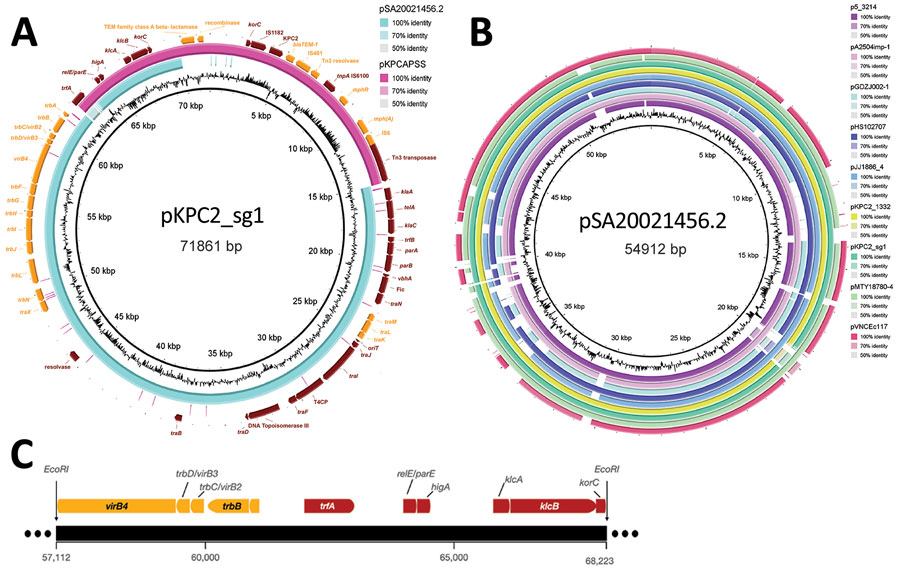Dominant Carbapenemase-Encoding Plasmids in Clinical Enterobacterales Isolates and Hypervirulent Klebsiella pneumoniae, Singapore
Melvin Yong, Yahua Chen, Guodong Oo, Kai Chirng Chang, Wilson H.W. Chu, Jeanette Teo, Indumathi Venkatachalam, Natascha May Thevasagayam, Prakki S. Rama Sridatta, Vanessa Koh, Andrés E. Marcoleta, Hanrong Chen, Niranjan Nagarajan, Marimuthu Kalisvar, Oon Tek Ng, and Yunn-Hwen Gan

Author affiliations: National University of Singapore, Singapore (M. Yong, Y. Chen, G. Oo, K.C. Chang, W.H.W. Chu, N. Nagarajan, M. Kalisvar, Y.-H. Gan); National University Hospital, Singapore (J. Teo); Singapore General Hospital, Singapore (I. Venkatachalam); National Centre for Infectious Diseases, Singapore (N.M. Thevasagayam, P.S.R. Sridatta, V. Koh, M. Kalisvar, O.T. Ng); Tan Tock Seng Hospital, Singapore (V. Koh, M. Kalisvar, O.T. Ng); Universidad de Chile, Santiago, Chile (A.E. Marcelota); Genome Institute of Singapore, Singapore (H. Chen, N. Nagarajan); Nanyang Technological University, Singapore (O.T. Ng)
Main Article
Figure 4

Figure 4. Annotated plasmid maps of the dominant carbapenemase-encoding plasmid in clinical Enterobacterales isolates and hypervirulent Klebsiella pneumoniae, Singapore. A) Annotated plasmid map of pKPC2_sg1 (GenBank accession no. MN542377), including the complete conjugative machinery (oriT, relaxase, T4CP, and T4SS) and the resistance genes, blaKPC-2, blaTEM-1, mph(A), and TEM family class A β-lactamase (TEM-1). The region of pKPC2_sg1 encoding the resistance genes was found in another plasmid called pKPCAPSS (GenBank accession no. KP008371), but the region encoding the conjugative machinery was highly similar to the sequence of pSA20021456.2 (GenBank accession no. CP030221). B) Plasmid alignment map showing other environmental or clinical plasmids with similar backbone, the pSA20021456.2 backbone, as pKPC2. C) Graphical representation of EcoRI/BamHI digested pKPC2 region containing replicon.
Main Article
Page created: June 22, 2022
Page updated: July 20, 2022
Page reviewed: July 20, 2022
The conclusions, findings, and opinions expressed by authors contributing to this journal do not necessarily reflect the official position of the U.S. Department of Health and Human Services, the Public Health Service, the Centers for Disease Control and Prevention, or the authors' affiliated institutions. Use of trade names is for identification only and does not imply endorsement by any of the groups named above.
